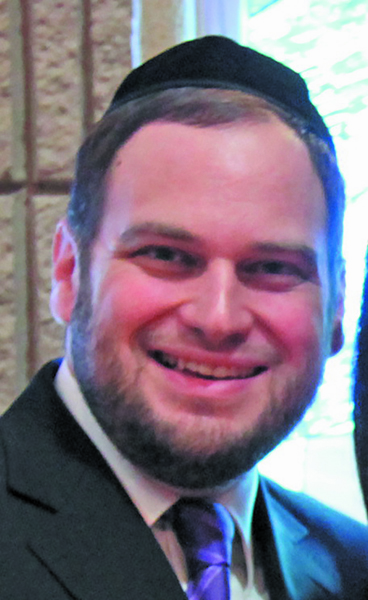

During the service performed by the kohen gadol on Yom Kippur, the mizrak, a vessel that contained the blood of the bull and goat sacrifice brought as atonement, was carried into the Kodesh HaKodashim—the Holy of Holies. Once inside, the kohen gadol dipped his finger into the mizrak and then sprinkled the blood on the Aron (Ark). He did this procedure eight times, sprinkling the blood toward the top of the Aron once, and then seven times toward the bottom.
During Chazarat Hashatz of Musaf, as we read the avodah of the kohen gadol, it is the custom to sing the description of the kohen sprinkling the blood each time. The Rama explains that the reason for this is as follows. The Gemara in Masechet Sukkah expresses that the Yetzer Hara (Evil Inclination) has seven names, with each one representing a specific power. When the Yetzer Hara sees that it is not successful in getting us to sin with one of his powers, he uses a different one. The kohen gadol sprinkling his finger down seven times resembles this process. The Yetzer Tov (Good Inclination) has only one power: to instill us with sanctity. This is represented by the kohen sprinkling his finger up one time. As the kohen achieves atonement for our sins, he recalls the methods by which we come to sin in the first place.
During the Aseret Yemai Teshuvah, we reflect on all of our mistakes and shortcomings from the past year. It is not enough to regret the sins, but we must challenge ourselves to identify what brought us to sin in the first place. This a very personal and honest experience if done correctly. It is part of the Rambam’s formula for teshuvah and also a tool that is helpful in many areas of our lives. We all have moments that we wish to forget. We have times in life where we question ourselves about what we were possibly thinking when recalling our behavior.
Teshuvah, according to the Rambam, is not only regretting our aveirot, but also resolving not to repeat them. This resolution can only be sincere if we identify what it is in our character that allowed us to make the mistake in the first place. Was there some external stimuli that triggered us to sin? Or was it something internal, ingrained deeply within us that brought us to a negative consequence? This calculation is critical when engaging in the teshuvah process. In the merit of our teshuvah, may Hashem sprinkle His blessing over all of am Yisrael for the coming year.
Rabbi Eliezer Zwickler is rabbi of Congregation AABJ&D in West Orange, NJ, and is a licensed clinical social worker in private practice. Rabbi Zwickler can be reached at [email protected].
By Rabbi Eliezer Zwickler










